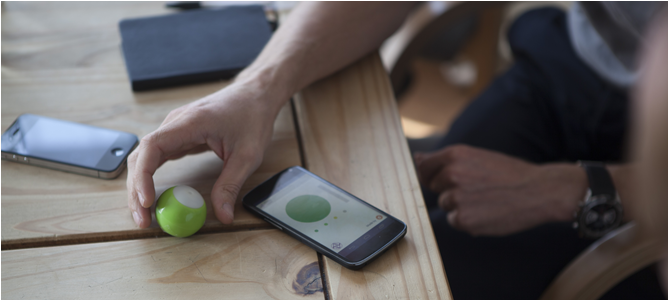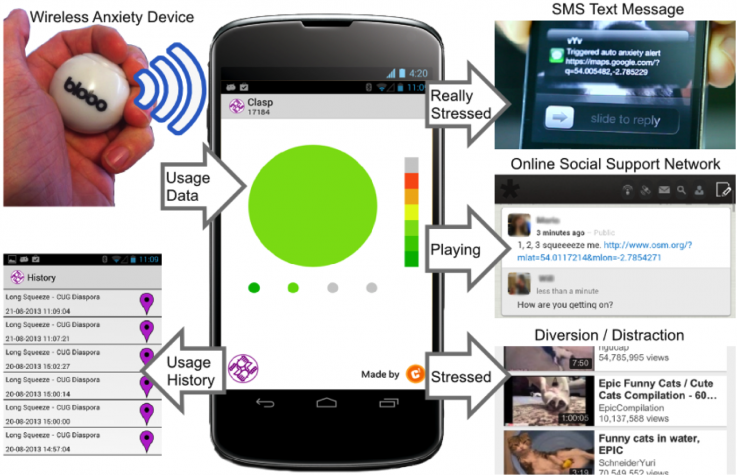
Our work builds on our previous research in anxiety management conducted in partnership with adults with High Functioning Autism (HFA) which resulted in the development of ‘Clasp’, a tactile ASD anxiety management and peer support network system. Clasp comprises a number of customisable components: a tactile digital anxiety object which communicates anxiety levels to a connected smartphone, implemented using a squeezable Bluetooth-connected ‘stress ball’; a peer-support network communication facility via SMS and distributed Social Network Service (SNS) status updates, implemented using Diaspora* to ensure data ownership remains in the hands of the data ‘creators’; an anxiety data aggregator and visualization tool for personal and community feedback.

Clasp V0.1 July 2014
“Everybody is unique, there is no one-fits-all solution”
If use of the ‘stress ball’ reaches user-defined thresholds, a user-defined response is triggered. The user can view their trigger history, which shows times and locations when triggers were reached. Hence, Clasp allows HFA adults to track their anxiety levels over time, to reflect on what made them anxious in different situations, to experiment with interventions that alleviate their anxiety, and to get support from their peers in situations of high anxiety.
The specific features of Clasp came about through an in-depth engagement with a wide variety of stakeholders, including those with HFA. Clasp was underpinned by a study into how anxiety in HFA adults is by and impacts their social engagement and the role digital technology may play in managing anxiety. Clasp evolved through a process that iteratively and collaboratively captured the requirements for an anxiety management and peer-support system, built a prototype for such a system, and evaluated key design implications for future development of Clasp and similar digital tools.